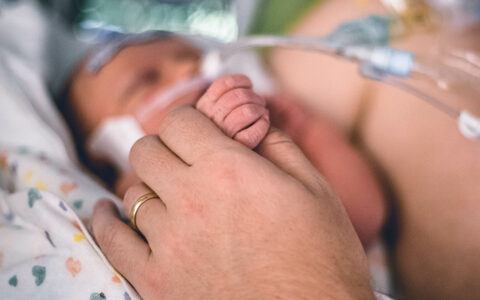Gynecology & Obstetrics
Research and innovation from the gynecology and obstetrics specialists at Vanderbilt Health

Preserving Fertility Options After Treatment is Advocates’ Goal
Call-to-action urges preservation of reproduction as part of pediatric cancer care protocols.
Read MoreLatest in Gynecology & Obstetrics

Guidelines Help Non-specialists Treat Obstetric Hypertension
Two toolkits help clinicians identify hypertensive disorders and prevent emergencies during pregnancy and the postpartum period.

How a Rare Pseudoaneurysm Escaped Misdiagnosis
Echogenic mass seen in prenatal echocardiogram mimics a benign rhabdomyoma.

Malnutrition and Maternal Depression Linked in Sickle Cell Study
Study finds maternal depression is independently associated with malnutrition in Nigerian children with sickle cell anemia.
Partners in Care
Medical expertise infused with integrated technology allows Vanderbilt Health specialists to build partnerships and elevate care in complex and specialized cases. Browse our referral directory or log into our online portal for referring providers.
Make a Referral
Teamwork Advances Cardiac Care Before and After Birth
A Monroe Carell multi-specialist team joined intensive efforts to save an Ebstein’s anomaly patient, illustrating advances in multi-center research and communication.

Ventriculostomy After Fetal Repair Enhances Care for Severe Spina Bifida
In treating hydrocephalus following fetal repair of myelomeningocele, endoscopic third ventriculostomy may be recommended.

Conversational Format Encourages End-of-Life Planning
A new style of advanced-care planning packet helped increase the number of patients with advance directives in the EMR.

Genetic Counselors Optimize Benefits of Prenatal Screening
Genetic counselors and physicians in maternal-fetal medicine stay abreast of fast-moving advances in DNA screening.

Intervention Reduces Malpractice Claims and Payouts
An intervention model aims to identify and reduce malpractice risk for large, single-specialty practices.

Minding Alerts to Long QT Syndrome Reduces Stillbirth
Early intervention when fetal heart rates go awry can mitigate morbidity and mortality risks.